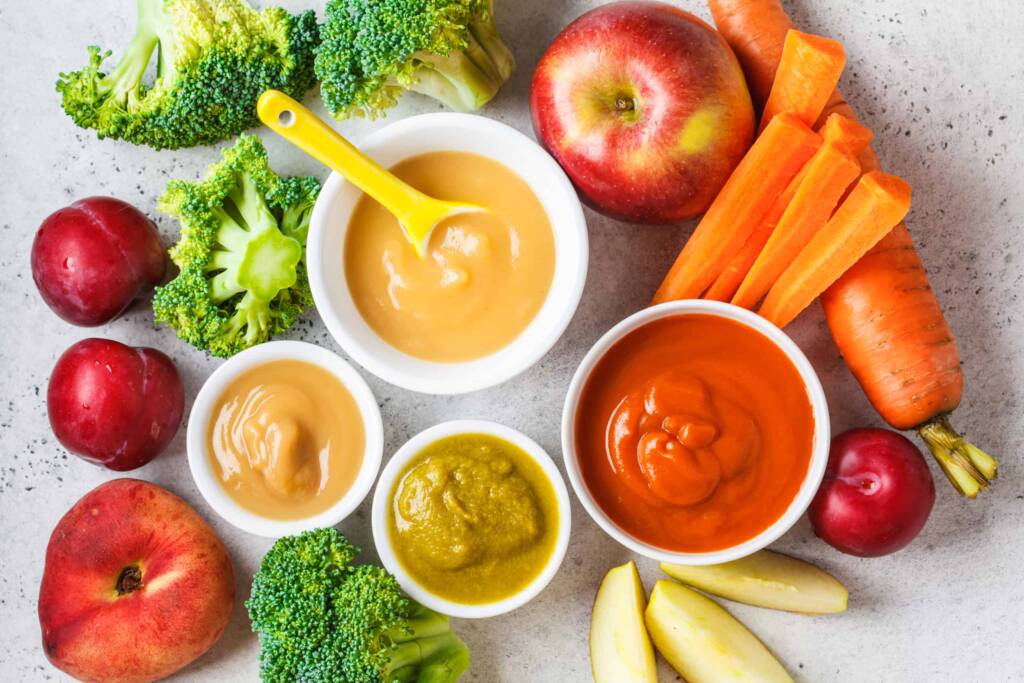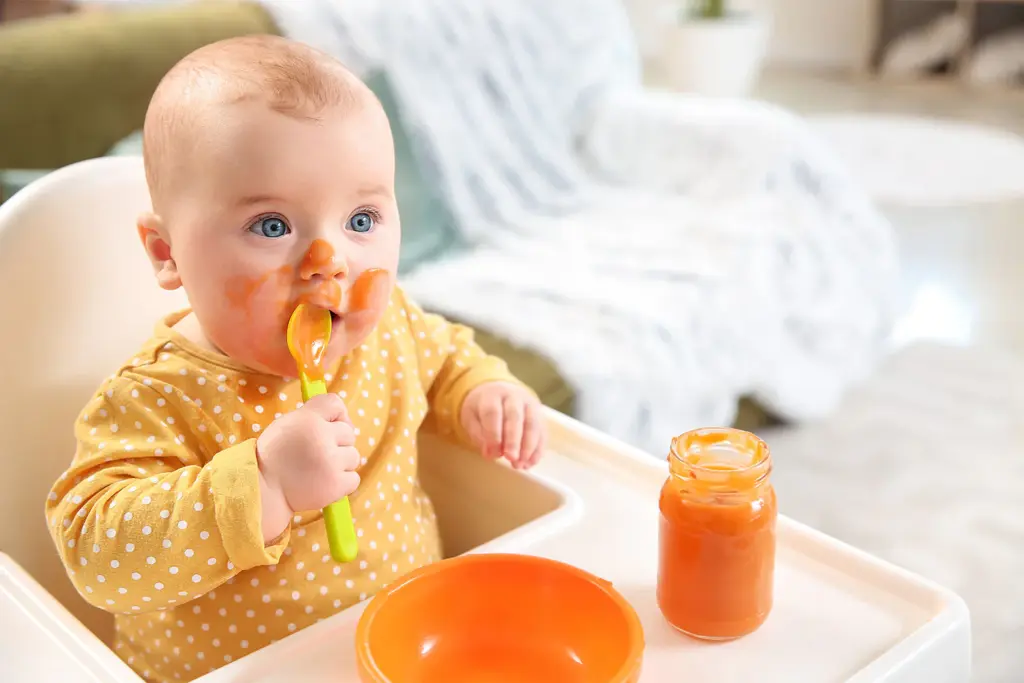Introduction to Homemade Baby Food
Making homemade baby food can be a rewarding experience that allows parents to provide their infants with nutritious, fresh, and cost-effective meals. Unlike store-bought options, homemade baby food gives parents complete control over ingredients and preparation methods, ensuring that their babies receive the best possible nutrition. This comprehensive guide will walk you through every step of the process, from selecting ingredients to troubleshooting common issues, providing you with the knowledge and confidence to make delicious and healthy baby food at home.
Getting Started with Homemade Baby Food
Essential Tools and Equipment
To begin making homemade baby food, you will need a few essential tools:
- Blender or Food Processor: For pureeing food to the right consistency.
- Steamer Basket: For gently cooking fruits and vegetables.
- Cutting Board and Knife: For preparing ingredients.
- Storage Containers: BPA-free containers for storing portions.
- Silicone Ice Cube Trays: For freezing small portions of baby food.
- Spoons and Bowls: Baby-safe feeding utensils and bowls.
Safety and Hygiene Practices
Ensuring food safety and hygiene is crucial when preparing baby food:
- Wash Hands and Equipment: Always wash your hands and all equipment thoroughly before starting.
- Sanitize Surfaces: Clean and sanitize all preparation surfaces.
- Check for Freshness: Use fresh ingredients and check for signs of spoilage.
- Proper Storage: Store food correctly to avoid contamination.

Understanding Nutritional Needs
Babies have specific nutritional needs that must be met for healthy growth and development:
- Balanced Diet: Include a variety of fruits, vegetables, grains, and proteins.
- Iron and Protein: Essential for development, especially after six months.
- Healthy Fats: Important for brain development.
Choosing Ingredients
Best Fruits for Baby Food
Fruits are a great first food due to their natural sweetness and essential vitamins:
- Bananas: Easy to mash and rich in potassium.
- Apples: High in fiber and vitamins; can be baked or steamed.
- Pears: Gentle on the stomach and easy to digest.
- Avocados: Packed with healthy fats and easy to prepare.
Best Vegetables for Baby Food
Vegetables provide essential nutrients and fiber:
- Carrots: Rich in beta-carotene and can be steamed and pureed.
- Sweet Potatoes: High in vitamins and have a naturally sweet taste.
- Peas: Good source of vitamins and minerals; can be steamed and pureed.
- Butternut Squash: Nutrient-dense and easy to cook.
Incorporating Grains and Proteins
Adding grains and proteins can help create a balanced diet:
- Oatmeal: Iron-fortified and easy to digest.
- Quinoa: High in protein and can be mixed with vegetables.
- Chicken: Cooked and pureed for a protein boost.
- Lentils: High in protein and fiber; can be cooked and mashed.
Organic vs. Non-Organic Produce
Deciding between organic and non-organic produce depends on personal preference and budget:
- Organic Produce: Free from pesticides and chemicals.
- Non-Organic Produce: Often more affordable but may contain residues.
Preparation Techniques
Washing and Peeling Fruits and Vegetables
Proper preparation is key to ensuring safe and nutritious baby food:
- Washing: Rinse all fruits and vegetables thoroughly under running water.
- Peeling: Peel fruits and vegetables to remove any potential pesticide residues and make them easier to digest.
Cooking Methods: Steaming, Boiling, and Baking
Different cooking methods can affect the texture and nutritional content of baby food:
- Steaming: Retains most nutrients and is gentle on the food.
- Boiling: Quick and easy but may reduce nutrient levels.
- Baking: Enhances the natural sweetness of fruits and vegetables.
Pureeing and Mashing Techniques
Achieving the right consistency is crucial for baby food:
- Pureeing: Use a blender or food processor for smooth purees.
- Mashing: For older babies, mashing with a fork provides more texture.
Storing Prepared Baby Food
Proper storage ensures that baby food stays fresh and safe to eat:
- Refrigeration: Store in airtight containers for up to 3 days.
- Freezing: Freeze in silicone trays and transfer to freezer bags; label with dates.
Stage 1 Baby Food (4-6 Months)
Introduction to Stage 1 Foods
Stage 1 foods are simple, single-ingredient purees suitable for babies just starting on solids:
- Consistency: Smooth and free of lumps.
- Ingredients: Focus on easily digestible fruits and vegetables.
Simple Puree Recipes
Here are a few simple puree recipes for Stage 1:
- Banana Puree: Mash a ripe banana until smooth.
- Sweet Potato Puree: Steam and blend sweet potatoes until smooth.
- Apple Puree: Steam or bake apples, then puree.
Single-Ingredient Foods
Single-ingredient foods help identify any food allergies or sensitivities:
- Carrot Puree: Steam carrots and blend until smooth.
- Pear Puree: Steam or bake pears, then blend.
Stage 2 Baby Food (6-8 Months)
Transitioning to Stage 2 Foods
Stage 2 introduces more complex flavors and combinations:
- Combination Purees: Mix two or more ingredients.
- Textures: Slightly thicker consistency.
Combination Puree Recipes
Some combination puree recipes for Stage 2:
- Apple and Carrot Puree: Blend steamed apples and carrots.
- Pea and Mint Puree: Blend steamed peas with a hint of fresh mint.
- Sweet Potato and Chicken Puree: Blend steamed sweet potatoes with cooked chicken.
Introducing New Textures
Gradually introducing new textures helps develop chewing skills:
- Lumpy Purees: Leave small lumps for practice.
- Soft Finger Foods: Introduce small, soft pieces of food.
Stage 3 Baby Food (8-12 Months)
Introduction to Stage 3 Foods
Stage 3 foods are chunkier and include more complex textures:
- Chunky Purees: Include small, soft chunks.
- Finger Foods: Encourage self-feeding with bite-sized pieces.
Chunky Puree Recipes
Some chunky puree recipes for Stage 3:
- Vegetable Medley: Steam and roughly mash a mix of vegetables.
- Chicken and Rice: Cook chicken and rice, then mash together.
- Fruit Salad: Mix small pieces of soft fruits like bananas, peaches, and berries.
Incorporating Finger Foods
Finger foods promote self-feeding and fine motor skills:
- Soft Fruits: Small pieces of banana or avocado.
- Steamed Vegetables: Small, soft pieces of carrot or broccoli.
- Small Pasta: Cooked and cooled pasta pieces.
Allergies and Food Sensitivities
Identifying Common Allergens
Common allergens to watch for include:
- Dairy: Milk and cheese.
- Eggs: Especially egg whites.
- Nuts: Peanuts and tree nuts.
- Seafood: Fish and shellfish.
Introducing Allergenic Foods Safely
Introduce allergenic foods with caution:
- One at a Time: Introduce one allergen at a time.
- Watch for Reactions: Monitor for any signs of allergic reactions.
- Consult a Doctor: Speak with a pediatrician if you have concerns.
Managing Food Sensitivities
If your baby shows signs of food sensitivity:
- Eliminate Suspect Foods: Remove the food from their diet.
- Monitor Symptoms: Keep track of any reactions.
- Seek Medical Advice: Consult a healthcare professional for guidance.
Cost-Effectiveness of Homemade Baby Food
Comparing Costs: Homemade vs. Store-Bought
Making baby food at home can be more cost-effective:
- Bulk Buying: Purchase ingredients in bulk to save money.
- Reusable Equipment: Invest in reusable containers and utensils.
- Cost Analysis: Compare the cost per serving of homemade vs. store-bought.
Budget-Friendly Ingredients
Choose budget-friendly ingredients without compromising nutrition:
- Seasonal Produce: Buy fruits and vegetables in season.
- Frozen Produce: Use frozen fruits and vegetables when fresh is not available.
- Affordable Proteins: Use lentils, beans, and chicken for protein sources.
Tips for Saving Money
Here are some tips for saving money when making baby food:
- Batch Cooking: Prepare large batches and freeze portions.
- Use Leftovers: Incorporate leftover vegetables and grains into baby food.
- Grow Your Own: Consider growing your own herbs and vegetables.
Storage and Preservation
Safe Storage Practices
Proper storage is essential for maintaining food safety:
- Labeling: Label all containers with the date and contents.
- Refrigeration: Store fresh baby food in the refrigerator for up to 3 days.
- Freezing: Freeze baby food in small portions for longer storage.
Freezing and Thawing Baby Food
Freezing baby food helps preserve it for future use:
- Freezing: Use ice cube trays to freeze small portions.
- Thawing: Thaw in the refrigerator overnight or use a warm water bath.
Shelf Life of Homemade Baby Food
Understand the shelf life of different baby foods:
- Fruits and Vegetables: Typically last 1-3 days in the refrigerator.
- Proteins and Grains: May last 1-2 days in the refrigerator.
- Frozen Foods: Can be stored for up to 3 months.
Feeding Tips and Tricks
Establishing a Feeding Schedule
A consistent feeding schedule helps establish a routine:
- Meal Times: Offer meals at regular intervals.
- Snacks: Include healthy snacks between meals.
- Hydration: Ensure your baby stays hydrated with water or breast milk.
Tips for Picky Eaters
Dealing with picky eaters can be challenging:
- Variety: Offer a variety of foods to keep things interesting.
- Presentation: Make food visually appealing.
- Patience: Be patient and persistent with new foods.
Encouraging Healthy Eating Habits
Establishing healthy eating habits early on is crucial:
- Role Modeling: Eat a variety of healthy foods yourself.
- Avoiding Sweets: Limit sugary foods and snacks.
- Balanced Diet: Ensure meals are balanced with fruits, vegetables, grains, and proteins.
Creative Recipes for Homemade Baby Food
Breakfast Ideas
Some creative breakfast ideas for your baby:
- Oatmeal with Fruit: Cook oatmeal and mix with pureed fruit.
- Scrambled Eggs: Soft scrambled eggs with a pinch of cheese.
- Yogurt and Berries: Plain yogurt mixed with mashed berries.
Lunch and Dinner Recipes
Healthy lunch and dinner recipes:
- Vegetable Soup: Pureed vegetable soup with soft chunks.
- Chicken and Quinoa: Cooked chicken mixed with quinoa and vegetables.
- Pasta and Peas: Small pasta pieces with pureed peas.
Snacks and Desserts for Babies
Tasty and healthy snacks and desserts:
- Fruit Puree Popsicles: Freeze pureed fruit in molds for a cool treat.
- Cheese and Crackers: Small pieces of cheese with whole grain crackers.
- Apple and Oat Bars: Homemade bars with oats and apple puree.
Involving Family in Baby Food Preparation
Tips for Getting Siblings Involved
Involving older siblings can make the process more enjoyable:
- Assign Tasks: Give age-appropriate tasks to siblings.
- Make it Fun: Turn preparation into a fun activity.
- Teach Nutrition: Educate about the benefits of healthy eating.
Making Baby Food Preparation a Family Activity
Making baby food can be a family bonding activity:
- Plan Together: Involve everyone in planning meals.
- Cook Together: Assign roles in the kitchen to family members.
- Taste Test: Let everyone taste the baby food.
Sharing Baby Food Recipes with Friends and Family
Share your homemade baby food recipes:
- Recipe Cards: Create and share recipe cards.
- Social Media: Post recipes and photos on social media.
- Community Groups: Join local or online parenting groups to exchange recipes.
Troubleshooting Common Issues
Refusal to Eat Homemade Food
If your baby refuses homemade food:
- Try Different Textures: Adjust the texture of the food.
- Mix with Favorites: Combine homemade food with favorite store-bought options.
- Be Patient: Continue offering homemade food without forcing.
Texture Problems
Achieving the right texture can be tricky:
- Puree Longer: Blend for a longer time for smoother textures.
- Add Liquid: Add breast milk, formula, or water to adjust consistency.
Storage and Spoilage Issues
Proper storage prevents spoilage:
- Check for Freshness: Always check the smell and appearance before serving.
- Rotate Stock: Use older batches first to prevent waste.
- Store Correctly: Follow safe storage practices to avoid contamination.

Frequently Asked Questions about Homemade Baby Food
Addressing Common Concerns
Common concerns include:
- Nutritional Adequacy: Ensuring homemade food meets nutritional needs.
- Food Safety: Preventing contamination and spoilage.
- Convenience: Making homemade food efficiently.
Expert Tips and Advice
Here are some expert tips for making homemade baby food:
- Batch Cooking: Cook in large batches to save time.
- Diverse Ingredients: Use a variety of ingredients to cover all nutritional bases.
- Stay Informed: Keep up with the latest guidelines and recommendations.
Resources for Further Reading
For more information, consider these resources:
- Books: Look for books on baby food recipes and nutrition.
- Websites: Visit reputable websites for tips and recipes.
- Classes: Consider taking a class on baby nutrition and cooking.


